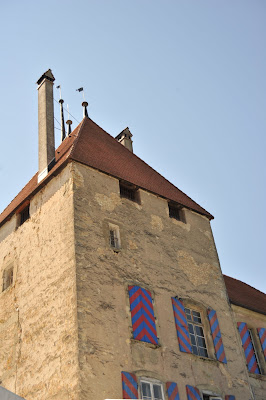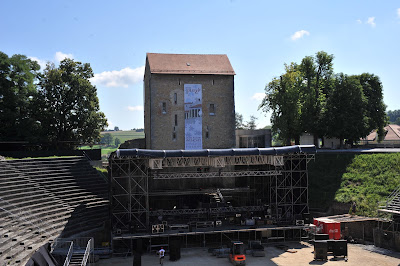



The castle was probably founded by the House of Savoy, during the third quarter of the thirteenth century . Cited for the first time in acts of 1291, the fortress of Rolle was then in possession of Count Amadeus V of Savoy, who at that time was in the thrall of Aymon Sallenôves .
In 1295, the fief passed into the hands of Sir John Greilly, whose descendant resided in Rolle until the fifteenth century. It was around 1330 that the counts of Savoy, founded the small town of Rolle on the low land which lies to the west of the castle.



After 1400, the lords of Greilly inherited not only the title of Count of Foix, but stretches of land in Guyenne. This led the family in the confusion resulting from the Hundred Years War, between France and England. Greilly John, Count of Foix, a supporter of England, was captured in 1453 by the French. To pay the ransom , his father was forced to sell his estate Savoy. Rolle was acquired by Amadeus Viry, lord of Mont -le - Vieux.



In 1531, goods of the latter went to John Amedee de Beaufort and in 1536 the Bernese, when they took possession of Vaud, also undertook the suzerainty of Savoy Rolle. But John Amedee, a member of the League of the spoon, never deigned to pay homage and fidelity to Council of Berne in 1543 .
In 1550, heavy debts forced him to sell the castle of Count Michel Rolle Gruyères , who does not, however long his remarkable acquisition. His economic ruin caused by Bern and Fribourg, forced him to turn to sell his property.



Rolle Castle was purchased in 1558 by a wealthy patrician Oberland, John Steiger , whose arms still adorn the facade overlooking the courtyard. The Steiger family retained the castle and manorial rights nearly two centuries.



In succession, the castle passed into the hands of Charles Rudolph Kirchberger in 1765. Ruined it, too, but by the liquidation of feudal rights, he sold all his possessions.


The castle was repurchased by the town of Rolle in betting public, March 29, 1799.
Then, the town used to house the schools, district prisons , the public library and the municipal administration. Today, the monument houses the health center, an exhibit hall and sessions of the Municipal Council. It houses the library of 13,000 books rich history. Its privileged location on the shores of Lake Geneva in the heart of a popular tourist area, is destined to a future bright.




The castle of Rolle is one of the few castles in Canton Vaud in not having received an assignment worthy of its history and allowing it to regain its luster of yesteryear.


Le Château de Rolle sits on the banks of Lac Léman































